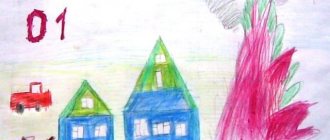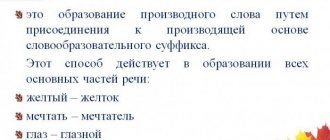"Brain-ring" on life safety "Sciences in military affairs"
Goal: To develop students’ interest in military affairs and knowledge in various branches of science.
To cultivate a feeling of love for the Motherland, pride in its heroic past. Participants: 10th grade students. The team consists of 5 people.
Rules of the game:
– the winner is determined by the highest amount of points scored;
– time for discussion 1 minute;
– readiness for the test is signaled by pressing a button on the table lamps installed at each table where the team sits;
– the respondent is appointed by the team captain;
– the beginning and end of the discussion of the issue is determined by the blow of the gong;
– if within a minute the teams do not have an answer option, the question is removed from the game;
– if the team’s answer is incomplete, no points are awarded;
– in case of an incorrect answer from one of the teams, before the expiration of one minute, the other teams have the opportunity to respond;
– a false start is pressing the button before the start of the minute of discussion, in which case the team is deprived of the right to answer the question;
– in case of a hint from the audience, the question is removed from discussion;
– super blitz – three questions, discussion 20 seconds for each question;
– if you answer one of the three questions incorrectly, the super blitz is considered lost;
– the team that correctly answered the first question of the super blitz continues to answer the next two questions and, with successful answers, receives three points. The remaining teams from the super blitz round are eliminated.
Game leader: life safety teacher or high school students. Jury: subject teachers.
Fanfare sounds. The host announces the rules of the game and the jury members. The first page of the brain ring opens.
1. Russian ancient history.
1st round – the gong sounds (also in subsequent rounds).
Question: What event in Russian military history does the date September 8, 1380 indicate?
Answer: Victory of Dmitry Donskoy on the Kulikovo Field over the 150,000-strong horde of Mamai.
2nd round. A video fragment of the “Battle on the Ice” is shown.
Question: What battle is shown and when did it take place?
Answer: The defeat of the Livonian Order on April 5, 1242 by the squads of A. Nevsky.
3rd round.
Question: Why is the date 1480 memorable?
Answer: Overthrow of the Tatar-Mongol yoke.
4th round. Blitz round: Who owns these words?
Question: “Whoever comes to us with a sword will die by the sword.”
Answer: A. Nevsky.
Question: “A bad soldier is one who does not dream of becoming a general.” Answer: A.V. Suvorov.
Question: “Win not by numbers, but by skill” Answer: A.V. Suvorov.
5th round:
Question: Name two outstanding naval commanders - heroes of the Sevastopol defense of 1854–1855, to whom monuments were erected in the city of Russian naval glory, Sevastopol? Answer: Admirals P. S. Nakhimov (1802–1855) and V. A. Kornilov (1806–1854).
2. History of the Great Patriotic War.
6th blitz round:
Question: Who did the Germans call “Black Death” during the war? Answer: Marines.
Question: What was the name of the German plan to capture Moscow? Answer: Typhoon.
Question: What territories was captured by the fascist Operation Edelweiss? Answer: Capture of the Caucasus.
7th round:
Question: Which WWII operation began at night under the light of 200 searchlights? Please indicate the date of this event? Answer: The assault on Berlin on the night of April 16, 1945.
8th round: A video fragment without sound “Signing of the act of surrender of Germany” is shown.
Question: What WWII event is shown in the video clip? When it was?
Answer: Signing of the act of unconditional surrender of Germany on May 8, 1945 by G. K. Zhukov.
9th round:
Question: Name the heroes of the Soviet Union who hoisted the Victory Banner over the Reichstag? When it was? Answer: Sergeant Mikhail Egorov and junior sergeant Meliton Kantaria April 30, 1945
Musical pause
3. Literary page
10th round:
Question: Name the works of A. S. Pushkin, which describes the historical battle that took place on June 27, 1709? Answer: The poem “Poltava”, in which A. S. Pushkin described the defeat of the Swedish invaders by Russian soldiers led by Peter T.
11th round:
Question: Name the work and author:
“Crossing, crossing, left bank, right bank, rough snow, edge of ice... To whom is memory, to whom is glory, To whom is dark water, - No sign, no trace.”
Answer: Poem “V. Terkin" by A. Tvardovsky.
12th round:
Question: Name the work and author:
“And as soon as the sky lit up, Everything suddenly began to move noisily, The formation behind the formation sparkled. Our colonel was born with a grip: Servant to the king, father to the soldiers... Yes, it’s a pity for him: he was struck down by damask steel, He sleeps in the damp ground.”
Answer: “Borodino” by M. Yu. Lermontov.
13th round:
Question: What battle is depicted in Konstantin Simonov’s story “Days and Nights”? Answer: Battle of Moscow.
4. Geographical page.
Round 14:
Question: Where did the Anglo-American landing force land, which opened a second front in Europe in June 1944? Answer: In Normandy.
15th round:
Question: It is known that during World War II the Soviet Army liberated, in whole or in part, 10 countries in Europe and 2 in Asia. Name the liberated Asian countries (within their previous borders). Answer: Korea and Northern China.
Round 16: Teams receive topographic maps U-34-37-V (Snov).
Question: Will the bridge across the Angara River in square 6511 support a modern tank? Justify your answer. Answer: No, it won’t, since this bridge is wooden and designed to weigh 10 tons, and a modern tank weighs more than 50 tons.
17th round:
Question: What relationship of physical geography underlies the operating principle of an aircraft altimeter? Answer: For every 10 meters you rise upward, the atmospheric pressure decreases by 1 mm Hg.
Round 18: There were 13 hero cities in the former USSR.
Question: Name 7 cities of Russian heroes. Answer: Leningrad, Volgograd, Moscow, Novorossiysk, Tula, Smolensk, Murmansk.
Musical pause. Participants are asked to be attentive. Song “38 knots” by A. Rosenbaum.
5. Math page.
19th round:
Question: What do the quantities you heard in the song mean: mile, knot and cables? What is the relationship between them? Answer: 1 mile 1852 meters (distance); 1 knot – 1852 km/h (measure of speed); speed of 38 knots is approximately equal to 70 km/h; cable lengths is 185.2 meters, i.e. tenth of a mile. All these quantities are used in the navy.
Round 20:
Question: What is the name of the main weapon of soldiers and sailors during the revolution and civil war? What is its caliber? Question: Model 1891 three-line rifle designed by Captain S.I. Mosin. Its caliber is 7.62 mm, i.e. three lines. Ancient Russian length measure: 1 line = 2.54 mm.
21st round
Question: What is the name of the famous field gun of this period? What is its caliber? Answer: The gun was called “three-inch” because of its caliber. 1 inch = 25.4 mm. 3 inches = 76 mm.
6. Physical page.
Round 22:
Question: Can the whistle of a bullet serve as a signal that it is approaching? Answer: No, because in most cases, i.e. when shooting up to 1000 m, the bullet speed is greater than the speed of sound.
23rd blitz round: During the Second World War, PTRS and PTRD were used to fight tanks. Why do they have such a long trunk? Answer: To increase the initial speed of the projectile, range, firing and penetration ability of the projectile.
Question: What does the presence of a gas chamber in a PTRS indicate? Answer: About automatic recharging.
Question: What is a muzzle brake used for? Answer: To reduce recoil.
24th round
Question: At what elevation angle of the gun barrel is the greatest firing range achieved? Answer: At an angle of 45.
Round 25:
Question: The temperature of the powder gases in the barrel when fired reaches 3000. The melting point of steel is 1500. Why doesn’t the barrel melt? Answer: The explosion of gunpowder lasts only a few thousandths of a second, so the barrel does not have time to melt.
7. Chemical page.
Round 26:
Question: For what purpose is sodium used in incendiary bombs? Answer: In order to make it difficult to extinguish a fire with water, since sodium reacts vigorously with it, hydrogen is released, which ignites.
Round 27: Attention, black box.
Question: The 1st World War was going on. One of the sides used new weapons for the first time. The invention that is in this box has saved the lives of many people. Name what is in this box, by whom and when was it invented? Answer: N.D. Zelinsky invented the gas mask in 1915.
28th blitz round:
Question: What is carbon monoxide? Answer: Carbon monoxide (CO).
Question: What is the common name for hydrogen cyanide? Answer: Hydrocyanic acid (HCN)
Question: If affected by what agent, artificial respiration cannot be given to the victim? Answer: When damaged by phosgene (COCL).
8. Linguistic page.
Round 29: In World War II, all warring parties used mainly radio communications and, naturally, the opponents’ communications were intercepted. We had to encrypt negotiations. But the keys were also found for the ciphers. Only the negotiations of the American army could not be deciphered, although, as a rule, they were conducted in clear text, without any codes.
Question: How did the Americans manage to do this? Answer: It’s just that the text was not in English, but in one of the Indian languages. Almost entirely men from one of the little-studied Indian tribes were mobilized into the US Army as signalmen.
30th round: In the old days in Rus' they used the so-called gibberish letter.
Question: Using gibberish, decipher the word YYUSKHFSHVKHYM. Answer: In gibberish writing, the code was the alphabet, the letters of which were written in two lines, one after the other, and were interchanged.
Cipher:
ABVGDEZZHI Y KLMNOP RSTUFHTSCHSHSHSHCHYYEYYA
Replacing the letters of the top row with the bottom ones and vice versa, we decipher the word: WINNER.
Musical pause.
Summing up the brain-ring.





